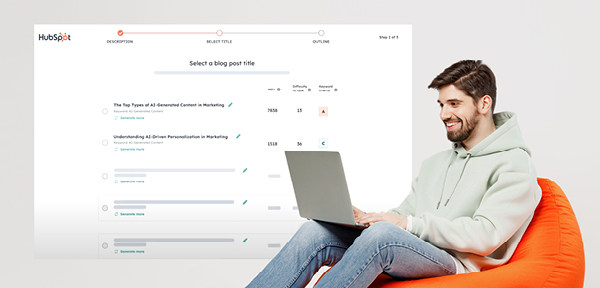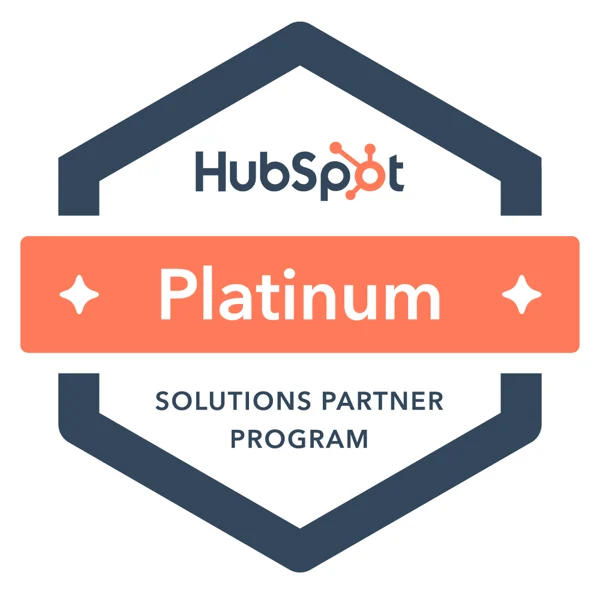May 5, 2024

A content marketer’s job is never done
Constantly creating high-value content is a neverending story — there’s always a new chapter to write. Having created a piece of content, it needs to be repurposed into different media for different marketing channels. It also needs to be managed – the performance of every piece of content needs to be tracked, to see how it’s performing, draw informed conclusions, and new content created that delivers even better results.
The quest for great content
The new hero in the marketer’s quest to create and manage memorable content is Content Hub. It’s the all-in-one AI-powered content marketing software in HubSpot that will help you devise and deliver content to fuel the entire customer journey. As a content specialist, you may already be cringing. Are you about to be made obsolete? Absolutely not! While Content Hub is an exceptionally powerful platform, it’s there to empower you. It requires savvy marketers to make it work to its full capabilities – which ultimately will make your life a lot simpler and help you focus on being creative. Before you roll your eyes, we highly recommend you give it a test run. Trust us, you’ll be pleasantly surprised.
What can Content Hub do for you?
In a nutshell, it can help you gear up your marketing strategy and put it into action. You can run and monitor every aspect of your marketing campaigns — creating everything from blog posts, emails, social posts, and more.
Let’s dive in and take a look at the key feat
- AI blog post generator- based on your description of what your blog is about and keywords, it creates a list of editable titles, together with monthly search volume (MSV), difficulty to rank, and keyword intents. Once you’ve selected the title you want, it provides a blog post outline. You have complete flexibility to add paragraph headings, remove those you don’t want, and add talking points.
From there, it generates an entire blog ready for you to edit. Here’s when you put your mark on the copy, ensuring it’s on message and speaks your brand’s language. HubSpot is way ahead of you, providing a tool that allows you to define your brand voice using past writing samples. Once you’ve edited the blog to your satisfaction, you can preview it before publishing it. But wait, you need an image! - AI image generator– simply describe the image you want (e.g. a steaming cup of hot coffee sitting on an office desk with a pair of spectacles beside it), decide on a style, and hit generate. Now, you can crop and edit your royalty-free image in the correct ratio for your blog posts, landing pages, marketing emails, and social posts.
- Blog post narration- with this handy feature, you can easily create audio from your blog content, customizing the tone and human voice before adding it to your blog or using it for different channels.
- AI language translation- translate your blog into multiple languages with a click. Voilà! Votre traduction est prête.
Drum roll, please! Killer feature coming up
Probably the most exciting tool in the Content Hub toolbox is Content Remix, which allows you to repurpose your content for multiple channels and formats in just a few clicks. Blink and it’s done. Here too, your sharp eye, copywriting chops, and editing muscles will come into play as you tweak the content until it’s just right.
But that’s not all…
Much like the shopping channel, there really is more! You can also create podcasts, smart content, landing pages and forms, CTAs, chatbots, and live chat. With HubSpot’s App Marketplace, you can create video content, engaging web experiences, and compelling design assets.
What happens the day after you unleash your content to the world?
You can easily track the performance of every piece of content you create, so you can leverage what’s working and drop what’s not.
MVP or VIP?
That brings us back to our original question: Is HubSpot’s Content Hub the most valuable player of your content marketing team? Our experience shows that it can be a very important player greasing your content wheels —with you in the driver’s seat to define the strategy and goals, refine the messaging, customize it to your brand, and add those crucial finishing touches.
It’s a valuable addition to the HubSpot platform that can simplify and streamline both the creation and management of your company’s content.
Ready to give it a try? Ask our HubSpot expert for a demo.















 As a company that leads Israeli B2B companies to success in the global market, we’ve developed a structured five-step process to ensure marketing directly advances the company’s business decisions.
As a company that leads Israeli B2B companies to success in the global market, we’ve developed a structured five-step process to ensure marketing directly advances the company’s business decisions.
 The beauty of this process lies in its clarity. Every marketing effort is measured by its direct contribution to the business. If it’s not in the plan, there’s a reason.
It may sound simple - and it is - but it requires you to pause, plan, and sometimes partner with an external professional. Someone who will hold you accountable, challenge your thinking, and keep you focused. Someone who’s done this many times before and knows how to steer the process.
The cheetah doesn’t wait - and the year won’t either. Now is the time to focus your marketing on what truly matters for your business and drive real impact. We’re here to help.
The beauty of this process lies in its clarity. Every marketing effort is measured by its direct contribution to the business. If it’s not in the plan, there’s a reason.
It may sound simple - and it is - but it requires you to pause, plan, and sometimes partner with an external professional. Someone who will hold you accountable, challenge your thinking, and keep you focused. Someone who’s done this many times before and knows how to steer the process.
The cheetah doesn’t wait - and the year won’t either. Now is the time to focus your marketing on what truly matters for your business and drive real impact. We’re here to help.





